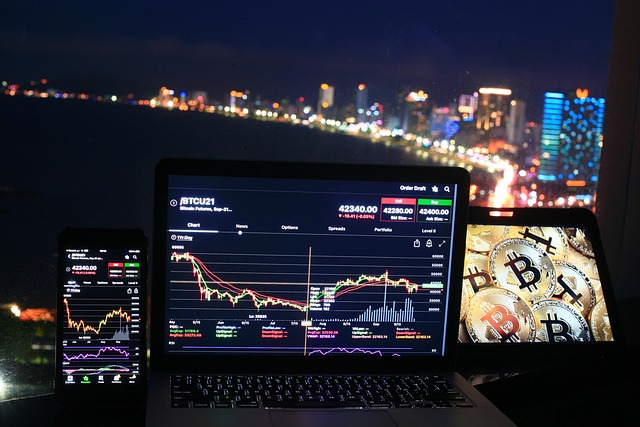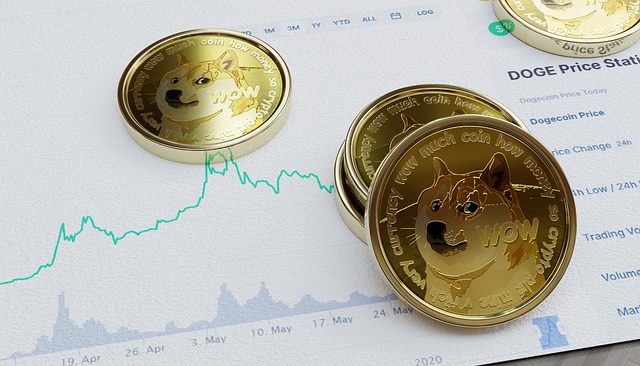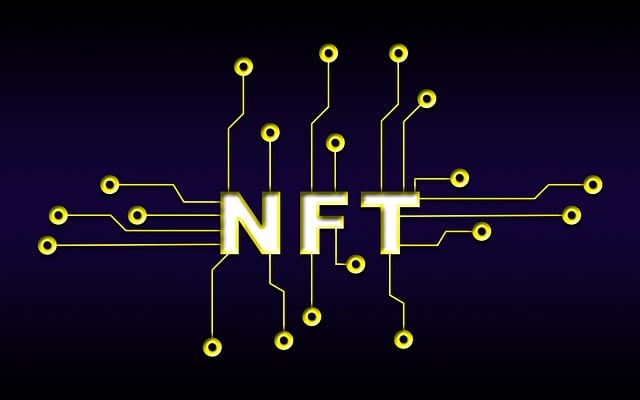What Is the Best Crypto Futures Trading Platform: A Practical Guide to Choosing the Right Exchange
Author: Jameson Richman Expert
Published On: 2025-11-03
Prepared by Jameson Richman and our team of experts with over a decade of experience in cryptocurrency and digital asset analysis. Learn more about us.
What is the best crypto futures trading platform depends on your trading style, risk tolerance, and priorities. This comprehensive guide explains how crypto futures work, the critical platform features to evaluate, a practical comparison of leading exchanges, step-by-step setup advice, risk-management best practices, and real-world examples to help you choose the right provider for your needs.

Why this matters: futures are different from spot trading
Crypto futures are derivative contracts that let you speculate on the future price of an asset without holding the underlying coin. They enable leverage (amplifying gains and losses), short selling, and hedging strategies. Because of increased complexity and counterparty risk versus spot trading, selecting the right futures platform is essential for safety, fees, execution speed, and available tools. For a primer on futures as a concept, see the Wikipedia entry on futures contracts.
For traders who prefer practice before risking capital, using a demo account is recommended — see this complete beginner's guide to demo trading accounts for details and how they work.
Key factors to evaluate when deciding “what is the best crypto futures trading platform”
Not every platform suits every trader. Below are objective criteria to compare exchanges and determine the best option for you.
- Security and reputation — custody policies, cold storage, history of breaches, proof-of-reserves, and regulatory standing.
- Liquidity & market depth — tighter spreads and faster fills on high-liquidity platforms reduce slippage for large positions.
- Leverage, margin modes & risk controls — isolated vs cross margin, maximum leverage, dynamic margin, and position limits.
- Fees & funding rates — taker/maker fees, funding rates for perpetual contracts, and discount structures for native tokens or VIP tiers.
- Order types & execution — market, limit, stop, stop-limit, trailing stop, iceberg, TWAP, and advanced conditional orders.
- Insurance fund & liquidation engine — protection mechanisms that prevent cascading liquidations or socialized losses.
- Trading interface & charting — integrated charting (or integration with TradingView), mobile apps, speed, and customization. See this TradingView chart analysis guide for setup and best-practice tips.
- APIs & automation — REST and WebSocket APIs, execution speed, rate limits, and support for algorithmic trading. If you use bots, read this AI crypto trading bot guide for considerations when selecting automated systems.
- Product range — perpetual swaps, quarterly futures, options, margin, and tokenized leverage products.
- Customer support & documentation — fast, 24/7 support and clear help docs reduce downtime when issues arise.
- Regulation & KYC — depending on jurisdiction, regulated platforms may limit access but offer stronger legal recourse.
Top contenders: platform-by-platform breakdown
Below are four widely used exchanges for crypto futures trading. Each entry includes a summary of strengths, common use-cases, and a direct signup link.
1. Binance (best for overall liquidity and product depth)
Binance is frequently cited as the largest crypto exchange by trading volume. It offers a vast derivatives suite, including perpetuals and quarterly futures on hundreds of pairs, institutional-grade liquidity, and competitive fees.
- Strengths: Deep liquidity, broad product range, advanced order types, and a mature insurance fund.
- Leverage: Up to 125x on some pairs (varies by asset and account type).
- Fees: Competitive maker/taker model with discounts for using BNB and VIP tiers.
- Tools: Integrated charting, good API, mobile and desktop apps, and extensive learning resources.
- Signup link: Register on Binance
2. Bybit (best for derivatives-focused traders and UI simplicity)
Bybit is popular among derivatives traders for its fast matching engine, intuitive UI, and strong suite of futures-specific features.
- Strengths: Clean interface, competitive fees, frequent product innovation, and strong customer service in many regions.
- Leverage: Up to 100x on major pairs.
- Fees: Competitive maker/taker structure and rebates for liquidity providers.
- Tools: Robust API, portfolio margin for some users, and educational resources.
- Signup link: Join Bybit
3. Bitget (best for copy trading and social features)
Bitget targets both derivatives traders and social/copy-trading users. If you want to mirror seasoned traders’ futures strategies, Bitget has strong copy-trading capabilities.
- Strengths: Copy trading, simple UI, strong risk controls for copy strategies.
- Leverage: Typically up to 125x on major pairs, depending on product.
- Fees: Competitive with referral and tier discounts.
- Tools: API, mobile-first experience, and educational materials.
- Signup link: Create a Bitget account
4. MEXC (best for altcoin futures & wide token availability)
MEXC lists a wide variety of altcoin futures and leveraged token products, which can be attractive if you trade smaller-cap or newly launched token derivatives.
- Strengths: Large breadth of futures markets, frequent new-pair listings.
- Leverage: Variable by asset — some pairs offer high leverage.
- Fees: Typically competitive with promotions for new users.
- Tools: API support, multi-product derivatives suite.
- Signup link: Sign up at MEXC

How to pick the best platform for your trading profile
Your ideal platform depends on objectives. Use the checklist below to map platform features to your needs.
- Beginner / learning stage: Prioritize demo accounts, low minimums, strong education, and easy UI. Use demo environments referenced earlier to practice without risk.
- Active day trader / scalper: Prioritize liquidity, low taker fees, fast order execution, advanced order types, and charting integrations.
- Swing trader / low-frequency: Focus on funding rates, overnight funding exposure, and margin modes.
- Institutional / large-size trader: Prioritize institutional-grade liquidity, OTC desks, customizable APIs, and strong legal/compliance posture.
- Algorithmic trader: Prioritize stable APIs, low latency, good sandbox/demo environments, and webhook/trading-bot integrations.
Fees, funding rates and an example calculation
Fees and funding can materially change performance over time. Perpetual contracts trade close to spot via periodic funding payments exchanged between longs and shorts.
Example: Suppose you open a 10 BTC notional long position on BTCUSD perpetual with 10x leverage. If the funding rate is 0.01% per 8 hours, your funding paid per period is:
Funding payment = Position notional × Funding rate = 10 BTC × 0.0001 = 0.001 BTC
At current BTC price = $50,000, that equals $50 every 8 hours (if you are the side that pays). Over a month, this compounds and can be material. Always check typical historical funding rates for the contract you trade — high rates indicate an imbalance and can make holding positions costly.
Fees: Taker fees apply for market orders; makers typically pay less or receive rebates. If your strategy uses many market orders, prefer low taker fees.
Risk management: protecting capital on leveraged products
Futures amplify risk. Implement the following rules to preserve capital:
- Position sizing: Risk a small percentage of equity per trade (commonly 1–3%).
- Use stop losses: Predefine exit points and stick to them.
- Prefer isolated margin: Isolated margin confines liquidation risk to a single position rather than your entire account.
- Avoid extreme leverage if new: High leverage multiplies fees, funding exposure, and liquidation probability.
- Monitor funding & rollovers: Long-term positions on perpetuals can incur large funding costs.
- Test strategies on demo: Validate edge and drawdowns using a simulated account before using real funds.

Order types & execution tactics every futures trader should master
Advanced order types reduce slippage and manage risk. Common useful orders:
- Limit & market orders — basic building blocks.
- Stop market & stop limit — automatic exits on adverse moves.
- Trailing stop — lock profits while allowing upside.
- Conditional orders — trigger orders based on price or indicators (useful for automation).
- Reduce-only — prevents accidental position increases.
Execution tactics: use limit orders near liquidity pockets, avoid market orders during major news, and split large orders (TWAP/VWAP) to minimize market impact.
Charting, analysis & tools
High-quality charting and analysis are essential. Many platforms offer built-in charts, but traders often prefer TradingView for its indicators, drawing tools, and community scripts. For guidance on downloading and configuring charting tools, consult this TradingView chart analysis guide.
Technical analysis basics to use on charts:
- Trend identification (moving averages, higher highs/lows)
- Momentum indicators (RSI, MACD)
- Volume profile & order flow when available
- Support/resistance zones and liquidity clusters
Automation, bots & copy trading
If you want to automate strategies or copy experienced futures traders, evaluate the platform’s API stability, rate limits, and available sandbox/demo environments. Automated trading tools and AI-based bots can accelerate execution but introduce technical and model risk. Read this guide on choosing the best AI crypto trading bot for additional considerations.

Regulation, taxes and legal considerations
Regulatory treatment of crypto derivatives varies by jurisdiction. In the US, derivatives fall under the Commodity Futures Trading Commission (CFTC) oversight when applicable. Check your local regulator for rules on leverage, retail access, and reporting. For U.S. derivatives oversight see the CFTC website.
Taxes: Profits from futures trading may be taxed as ordinary income, capital gains, or under special rules depending on jurisdiction. Consult a tax professional and keep detailed trade records.
Platform-specific pros and cons (quick reference)
- Binance — Best all-round: unmatched liquidity & products; slightly complex UI for beginners.
- Bybit — Best for derivatives-focused traders: clean UX and strong matching engine; lesser fiat on-ramps in some regions.
- Bitget — Best for copy traders: social features and copy strategies; may have fewer institutional-grade services.
- MEXC — Best for altcoin access: extensive listing of altcoin futures; smaller liquidity on niche pairs increases slippage risk.
Market outlook & strategic considerations
When selecting a platform, consider macro and specific-asset outlooks. For example, if you’re trading XRP futures, long-term structural drivers like ETF approvals or stablecoin adoption can influence directional bias and volatility. For longer-term perspectives on XRP and related markets, see this XRP price prediction and long-term outlook.
Market seasonality and news events (macro data, regulatory announcements, token unlocks) can spike volatility. Use smaller position sizes before major events and monitor news sources to avoid avoidable liquidations.

Step-by-step: how to get started with futures trading (practical)
- Learn & practice: Read guides, watch tutorials, and use demo/trial accounts to simulate trades. See this demo trading accounts guide to understand how to practice without real money.
- Choose the right platform: Apply the checklist above; consider starting on a low-cost exchange with good liquidity like Binance or Bybit.
- Complete KYC & secure your account: Enable 2FA, use withdrawal allowlists, and fund only what you can afford to lose.
- Start small: Use conservative leverage and small position sizes to validate execution and psychology.
- Log trades & review: Keep a trading journal and analyze performance metrics: win rate, average return, max drawdown.
- Scale slowly: Increase size or leverage only after consistent positive edge and validated risk controls.
Common beginner mistakes and how to avoid them
- Overleverage: Tempting but dangerous; it increases liquidation risk and amplifies fees and funding.
- Poor position sizing: Don’t risk large percentage of capital on a single trade.
- Ignoring funding rates: Perpetual funding can erode returns for long-term positions.
- No exit plan: Always define risk/reward and stop-loss before entering.
- Trading without testing: Backtest and demo your strategy before real capital deployment.
Security best practices when using futures platforms
- Enable 2FA and use hardware authentication when supported.
- Keep only active trading capital on exchange; withdraw excess to cold storage.
- Use strong, unique passwords and a password manager.
- Enable withdrawal whitelists and email confirmations for large withdrawals.
- Monitor account activity and API keys; revoke unused keys.

Extra resources and further reading
Official regulator and educational references:
- CFTC — U.S. Commodity Futures Trading Commission (derivatives regulation)
- Wikipedia — Futures contract (concept overview)
- Investopedia — Leverage (detailed explanation of leverage)
Platform-specific signup links (convenience):
Putting it together — which platform is “best”?
There is no single universally “best” crypto futures trading platform. Instead, the best choice aligns with your objectives:
- Overall best for most traders: Binance — deep liquidity, wide product range, and competitive fees make it a strong default for many futures traders.
- Best for derivatives-focused traders: Bybit — excellent execution and focused derivatives feature set.
- Best for social/copy trading: Bitget — strong copy trading and social features suit those who prefer following skilled traders.
- Best for altcoin exposure: MEXC — extensive altcoin futures listings for traders targeting niche markets.
Start with a demo or small live allocation as you test platform mechanics, fees, funding, and UX. For practicing and learning how demo trading accounts work, start with this beginner's demo trading guide to reduce learning friction and avoid costly early mistakes.
Final checklist before you trade
- Have you practiced in a demo environment and reviewed your strategy’s historical performance?
- Is your position sizing rule defined and adhered to?
- Have you checked typical funding rates and fee schedules for the contract?
- Is two-factor authentication enabled and are withdrawal protections active?
- Do you know how the platform’s liquidation and insurance mechanisms work?

Conclusion
Choosing "what is the best crypto futures trading platform" requires balancing safety, liquidity, fees, tools, and product availability against your personal trading objectives. For many, Binance and Bybit lead for liquidity and professional features, Bitget is compelling for social/copy trading, and MEXC stands out for altcoin access. Use demo accounts, robust risk management, and charting/automation tools (see TradingView guide and AI bot considerations) before scaling. Finally, keep learning — markets evolve, and the “best” platform for you may change as your strategy and the ecosystem mature.
Further reading: explore the long-term factors for specific tokens such as XRP in this XRP long-term outlook piece to better align futures strategies with macro and token-level narratives.
Good luck — trade carefully and prioritize capital preservation above quick gains.